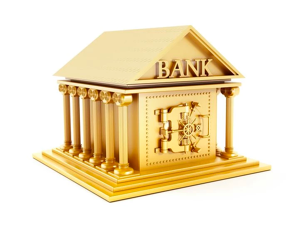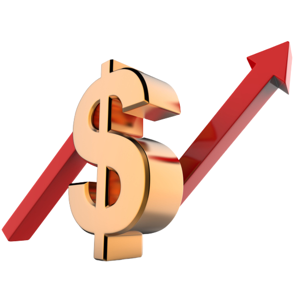Tavex uses cookies to ensure website functionality and improve your user experience. Collecting data from cookies helps us provide the best experience for you, keeps your account secure and allows us to personalise advert content. You can find out more in our cookie policy.
Please select what cookies you allow us to use
Cookies are small files of letters and digits downloaded and saved on your computer or another device (for instance, a mobile phone, a tablet) and saved in your browser while you visit a website. They can be used to track the pages you visit on the website, save the information you enter or remember your preferences such as language settings as long as you’re browsing the website.
| Cookie name | Cookie description | Cookie duration |
|---|---|---|
| tavex_cookie_consent | Stores cookie consent options selected | 60 weeks |
| tavex_customer | Tavex customer ID | 30 days |
| wp-wpml_current_language | Stores selected language | 1 day |
| AWSALB | AWS ALB sticky session cookie | 6 days |
| AWSALBCORS | AWS ALB sticky session cookie | 6 days |
| NO_CACHE | Used to disable page caching | 1 day |
| PHPSESSID | Identifier for PHP session | Session |
| latest_news | Helps to keep notifications relevant by storing the latest news shown | 29 days |
| latest_news_flash | Helps to keep notifications relevant by storing the latest news shown | 29 days |
| tavex_recently_viewed_products | List of recently viewed products | 1 day |
| tavex_compare_amount | Number of items in product comparison view | 1 day |
| Cookie name | Cookie description | Cookie duration |
|---|---|---|
| chart-widget-tab-*-*-* | Remembers last chart options (i.e currency, time period, etc) | 29 days |
| archive_layout | Stores selected product layout on category pages | 1 day |
| Cookie name | Cookie description | Cookie duration |
|---|---|---|
| cartstack.com-* | Used for tracking abandoned shopping carts | 1 year |
| _omappvp | Used by OptinMonster for determining new vs. returning visitors. Expires in 11 years | 11 years |
| _omappvs | Used by OptinMonster for determining when a new visitor becomes a returning visitor | Session |
| om* | Used by OptinMonster to track interactions with campaigns | Persistent |
| Cookie name | Cookie description | Cookie duration |
|---|---|---|
| _ga | Used to distinguish users | 2 years |
| _gid | Used to distinguish users | 24 hours |
| _ga_* | Used to persist session state | 2 years |
| _gac_* | Contains campaign related information | 90 days |
| _gat_gtag_* | Used to throttle request rate | 1 minute |
| _fbc | Facebook advertisement cookie | 2 years |
| _fbp | Facebook cookie for distinguishing unique users | 2 years |
How Governments and Banks Have "Outlawed" Economic Downturns

Central banks and governments have effectively “outlawed” economic recessions, swiftly intervening at the first sign of trouble. This approach has nurtured a generation unfamiliar with severe economic downturns, blind to the risks associated with perpetual stimulus policies, according to financial analyst Charles Hugh Smith.
In an opinion piece for The Daily Reckoning, Charles Hugh Smith challenges the conventional wisdom on the origins of recessions:
The prevailing belief attributes recessions to economic and financial factors, but this is a misconception. The true root lies in human nature – our resistance to change, our adaptation to extremes, and our normalisation of counterproductive behaviours, which are then manifested through economic and financial symptoms. These symptoms are merely the consequences, not the root causes.
The dominant narrative suggests that recessions (great recessions) are inherently negative and must be avoided at all costs. The strategy? An onslaught of monetary policy from the Federal Reserve and fiscal stimulus from the government aimed at preempting economic slowdowns in the financial market.
Reflecting on the past 40 years, one could argue that these interventions have successfully mitigated the impact of recessions. Since the recession of 1981-82, economic downturns have been notably milder and shorter, causing brief discomfort before dissipating.
The Paradox of ‘Recession-Proofing’ Measures

The commitment to staving off recessions has led to a series of unforeseen side effects. The adoption of significant “extraordinary” stimulus actions has morphed into a standard policy approach, giving rise to an economy inflated by “bubbles”.
An economic bubble is created when current asset values significantly exceed their intrinsic valuation – the valuation that the underlying long-term fundamentals justify
Because of the low interest rates and easy access to credit for a select few in this economy, there is a growing desire for assets that can provide consistent cash flows and economic growth, which is feeding the speculative frenzy.
Our acclimation to this bubble-infused economy and its speculative excesses has rendered them seemingly ordinary. However, lurking beneath this facade of normalisation is a dangerous reality – we have grown overly reliant on the bubble economy and its speculative bubbles. The moment these bubbles pop and speculators face bankruptcy, we stand on the precipice of a catastrophic collapse affecting both the economy, stock markets, and the financial system.
In an environment where interest rates are above zero, capital assumes a cost. This cost of capital makes speculation a high-stakes game with real risks and repercussions, adding instability to the bubble economy.
The reliance on extraordinary stimulus measures has solidified its position as the economy’s foundation, effectively trapping us on a path with no easy exit. Confronted with the threat of a bursting bubble, the reflexive solution seems to be an escalation in artificial stimulus.
Due to the normalisation of once-extreme concepts, it has become far too easy to ignore the negative forces at play underneath the surface, forces that eventually jeopardise our well-being and economic stability and well-being.
Exploring the Impact of the Federal Reserve on the Real Estate Bubble

Consider the scenario of the United States housing market crash: without the Federal Reserve stepping in to purchase trillions of dollars in mortgage-backed securities, how would the market have fared? Essentially, this intervention led to the mortgage market – where mortgage-related financial instruments are exchanged – being effectively nationalised.
Furthermore, the surge in public debt has become a normalised aspect of the economic landscape. With the Federal Reserve and The Bank of England slashing interest rates to virtually zero, fears over escalating debt levels have been assuaged, giving the illusion that the issue is under control. This complacency has paved the way for unchecked government spending, creating an environment where, on the surface, everything appears stable.
The Dynamics of Runaway Inflation

The proliferation of “money” in the economy, chasing a finite array of goods and services, inevitably leads to inflation. This is typified by a steady decline in the purchasing power of the currency, which leaves workers with less purchasing power for the same wage.
More on the topic here: How Does Inflation Affect Gold Prices?
This phenomenon has triggered a cycle where, despite real wages in the U.S. remaining static for four decades, inflation has taken 20 percent of wages since 2020. The rise since 2020 can be pin pointed to the covid-19 pandemic. The necessity for higher wages becomes apparent, aiming to ensure that individuals beyond the middle class and the affluent can manage their expenses.
Yet, this increase in wages inadvertently fuels inflation, which then exerts additional pressure on wages to rise in the long run, mirroring the effects of money printing and credit expansion in the great depression.
A significant fallout from the extraordinary stimulus measures is the exacerbation of wealth inequality. Those positioned at the economic apex benefit from virtually cost-free borrowing. Leveraging limitless credit, they acquire income-generating assets, thereby magnifying the wealth of the affluent and inflating asset prices. This surge in asset prices is driven by the affluent’s access to cheap capital, creating a bubble as everyone vies for these assets with the available funds.
In the financial realm, individuals have secured loans at a mere 2 percent interest rate, in stark contrast to the “serfs” grappling with 20 percent interest on their credit cards. For the bottom 95 percent, the cost of safer investments has skyrocketed, making it impossible to outcompete the wealthy, who enjoy the privilege of free money. Consequently, many have had no alternative but to venture into speculation.
Given the Federal Reserve’s implicit assurance against the bursting of any bubble, markets predicated on speculation are in a precarious state. A dip in real estate or stock values prompts immediate intervention, which in turn, escalates asset prices even further.
Navigating from Bubble to Bubble: A Strategy of Amplification
The strategy involves transitioning from one investment bubble to another, leveraging this movement to multiply initial gains. For instance, transforming a single successful Airbnb rental property into a portfolio of three, five, or even twenty rental properties.
This approach has proven to be highly effective for the wealthiest 10 percent of the population, who control 90 percent of financial assets
Conversely, for the bottom 50 percent, the impact has been negligible – their share of financial assets has only increased by a marginal 0.2 percentage points following the coronavirus crisis, despite the injection of trillions of dollars into the economy.
The disparity becomes even more pronounced at the pinnacle of wealth, where the richest 0.1 percent saw their wealth surge by $10 trillion.
Rest Assured, All Appears to Be Well
There is a broad feeling of well-being in an era where measures that have proven incredibly effective have rendered recessions obsolete. The assurance of abundant credit, ample job opportunities, and aggressive monetary stimulus has become the norm. The Federal Reserve stands as a vigilant guardian, ready to address any emerging challenges.
The prevailing confidence suggests that nothing could possibly go wrong, bolstered by four decades of evidence supporting this invincible safety net. It seems an unassailable truth that we are well-protected against economic downturns.
However, beneath this layer of optimism, complex economic forces are at play. Inflationary pressures hinder the Federal Reserve’s ability to lower interest rates to zero, widening gaps in wealth threaten societal cohesion, speculative ventures carry hidden dangers, and financial bubbles are prone to burst, despite the lofty assurances from our economic stewards.
For those born after 1982, the experience of a genuine recession remains outside their lived reality. Consequently, they find themselves ill-equipped for scenarios diverging from the comforting promises of universal bailouts and the perpetual escalation of asset values.
Gold’s Part to Play
In a recent analysis by Bloomberg, they assessed that gold’s price is likely to rise in the next few months, supported by optimism for monetary easing. However, its rally could face headwinds from a strong U.S. stock market, currency, and interest rates. A further rally in gold prices could benefit from an equity bubble burst and rate cuts, though the likelihood of these events remains uncertain.


















